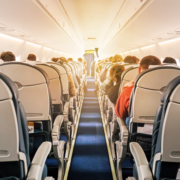Sunshine in Litigation Act introduced in the District of Columbia

By Sally Greenberg, NCL Executive Director
Here in the District of Columbia, we have a chance to stop the problem of secret settlements with the introduction of the DC Sunshine in Litigation Act (SILA).
The bill, which is scheduled for a hearing before Councilmember Allen’s Judiciary Committee on December 8, would require DC judges to consider public health and safety before granting a protective order, sealing court records, or approving a settlement agreement. Introduced by consumer champion and DC Councilmember Mary Cheh, the bill will ensure that injuries caused by dangerous or unhealthy products do not any longer get sealed away from the public through legal settlements.
As Councilmember Cheh said in her letter to the Council:
“This presumption in favor of public access is especially important in cases that have implications for individuals beyond the parties to litigation—in particular, cases that involve defective products or dangerous environmental conditions that pose a risk to the general public. Unfortunately, it has become increasingly common in cases like these for parties to undermine the public interest, often with a court’s endorsement, either through sweeping confidentiality clauses in settlement agreements or through protective orders issued by the court.
“Court-sanctioned secrecy in such cases can be a matter of life and death. Perhaps the clearest example of this comes from the high-profile litigation related to the opioid epidemic. As early as 2001, individuals and governments began filing lawsuits alleging that opioid manufacturers had misled doctors about the dangers of prescription opioids. However, because judges in these cases required that court records remain under seal, the compelling evidence of the manufacturers’ wrongdoing and of the dangers of opioids uncovered by the litigants was kept from the public for over a decade.”
This issue of secret settlements has a long and sordid history. Typically, a consumer sues a manufacturer for an injury or death that has resulted from a defect in one of the manufacturer’s products. The victim is suing a large corporation that can spend huge sums of money defending the lawsuit and delaying its resolution. Facing a formidable opponent and mounting medical bills, plaintiffs are discouraged from continuing and often seek to settle the litigation. In exchange for monetary damages, the victim is often forced to agree to a provision that prohibits him or her from revealing information disclosed during the case. While the plaintiff gets a respectable award and the defendant can keep damaging information from being publicized, the public remains unaware of critical health and safety information that could save lives.
Bipartisan federal SILA bills have been introduced since the 1990s, with Senator Herb Kohl (D-WI), now retired, being the prime champion, but sadly, none became law. So, we are left to legislate this important consumer protection matter on the state level.
The witnesses who testified before Congress in past years have developed a strong set of stories that underscores the importance of getting these bills passed. A shameful litany of products that have caused injury and death exists but without public scrutiny, the company continues to market and sell the product and keeps the hazards secret. At the hearings in 1990 and 1994, Congress heard testimony about silicone breast implants, adverse reactions to a prescription pain killer, “park to reverse” problems in pick-up trucks, defective heart valves, dangers from side-saddle gas tanks, playground equipment, IUD birth control devices, tires, and portable cribs.
Fast forward to 2011, the Senate Judiciary Committee hearing included many such stories of dangerous products whose hazards remained a secret, including the following.
- Phenylpropanolamine – Known as PPA, in 1996 caused a seven-year-old boy in Washington State to suffer a sudden stroke and fell into a coma hours after taking an over-the-counter medicine to treat an ear infection. After three years in a coma, he died. The child’s mother sued the manufacturer of the medicine alleging that the stroke was induced by PPA, an ingredient with deadly potential side effects, which has since been banned by the Food and Drug Administration (FDA). Unknown to the public, similar lawsuits in state and Federal courts had previously been filed against the drug manufacturer, but were settled secretly, with the lawyers and plaintiffs subject to restrictive confidentiality orders.
- Silicone breast implants – Information about the hazards of silicone breast implants was discovered during litigation as early as 1984, but because of a protective order that was issued when the case settled, the information remained hidden from the public and the FDA. It was not until several years and tens of thousands of victims later that the public learned of potentially grave risks posed by the implants.
- “Park-to-reverse”’ malfunction – For many years, one car company was aware of problems associated with “park-to-reverse”’ malfunction in its pick-up trucks and quietly settled cases stemming from this alleged defect. It was not until years later that the company made a minimal effort to notify original owners by sending stickers alerting them that there was a problem. The stickers made no mention of the potential risks of severe injury or death. Unfortunately, 2.7 million of these truck owners did not receive the warning. One victim was Tom Schmidt. His parents Leonard and Arleen Schmidt testified before the Subcommittee on Courts and Administrative Practice. During their lawsuit they learned that the company had known about the problem as early as 1970 and had quietly settled cases with strict protective orders concealing information about the problem.
- Bjork-Shiley heart valve – Over the course of several years, Bjork-Shiley heart valves were linked to 248 deaths. The manufacturer insisted on secrecy agreements when settling dozens of lawsuits before the FDA finally removed the valves from the market. The Subcommittee on Courts and Administrative Practice heard testimony from Fredrick Barbee about how court-endorsed secrecy prevented him and his wife from learning about the potential heart valve malfunction and prevented her from getting the appropriate and life-saving treatment she needed when her valve malfunctioned.
- Dalkon Shield – In 1974, the FDA suspended use of the Dalkon Shield, a popular intrauterine birth control device. The device was linked to 11 deaths and 209 cases of spontaneous abortion. Prior to the FDA’s action, the maker of the device had settled numerous cases with strict confidentiality agreements. The manufacturer even attempted to include agreements with the plaintiffs’ lawyers that would have prohibited them from taking another Dalkon Shield related case.
- Side-saddle gas tanks – Over the course of several years, one car company quietly settled more than 200 cases brought by victims of fiery truck crashes involving the automaker’s side-mounted gas tanks before the defect became known. It was not until 1993, when General Motors sued Ralph Nader and the Center for Auto Safety for defamation, that lawyers discovered records showing that GM had been sued in approximately 245 individual gas tank pick-up truck cases. The earliest cases had been filed as far back as 1973. Almost all cases were settled and almost all the settlements required the plaintiffs to keep the information secret.
- Playground equipment – Miracle Recreation Company manufactured and sold a piece of playground equipment called Bounce Around the World. Dozens of lawsuits were brought against the company alleging that it was dangerous and caused serious injuries to young children, including severed limbs and crushed bones. For 13 years, the public and regulatory agencies remained in the dark about the potentially crippling equipment because the company insisted on settling lawsuits conditioned by confidentiality agreements. Approximately 80 children between the ages of four and five were seriously injured before the CPSC learned about the magnitude of the danger and the company recalled the merry-go-round
- Collapsing decks – On June 16, 2015, shortly after midnight, five Irish J-1 visa students and one Irish-American died and seven others were injured after a balcony on which they were standing collapsed. The group was celebrating a 21st birthday party in Berkeley, California. One of those injured died of her injuries later that year. Building inspectors later found that the wooden supports holding up the balcony had been eaten away by dry rot, even though the structure was less than 10 years old. It subsequently emerged that the contractors who built the complex, Segue Construction of Pleasanton, California, had paid $26.5 million in settlements for previous defect cases, but that this information had not been available to the state construction licensing authority or to clients.
What needs to be done
Time is of the essence in getting this bill enacted in the District of Columbia. Residents of DC will not know what hazards are lurking out there until this bill passes!
Business interests have typically opposed these bills in other states and in Congress. They claim that the Sunshine in Litigation legislation will slow down the courts, discourage settlements, and launch fights over production of documents. In fact, AK, FL, LA, MT, NV, NC, OR, SC, TX, VA, and WA, have all adopted some form of SILA laws and there has been no such collapse of the legal process.
As Councilmember Cheh noted in her letter introducing the bill, “according to the legal advocacy organization Public Justice, there is no evidence that these anti-secrecy laws have discouraged settlements, exposed proprietary interests or trade secrets, or imposed burdens on the courts.”
We look forward to the December 8 hearing and having residents of the District come forward to tell members of the City Council how especially important the Sunshine in Litigation Act is to their families and communities.















